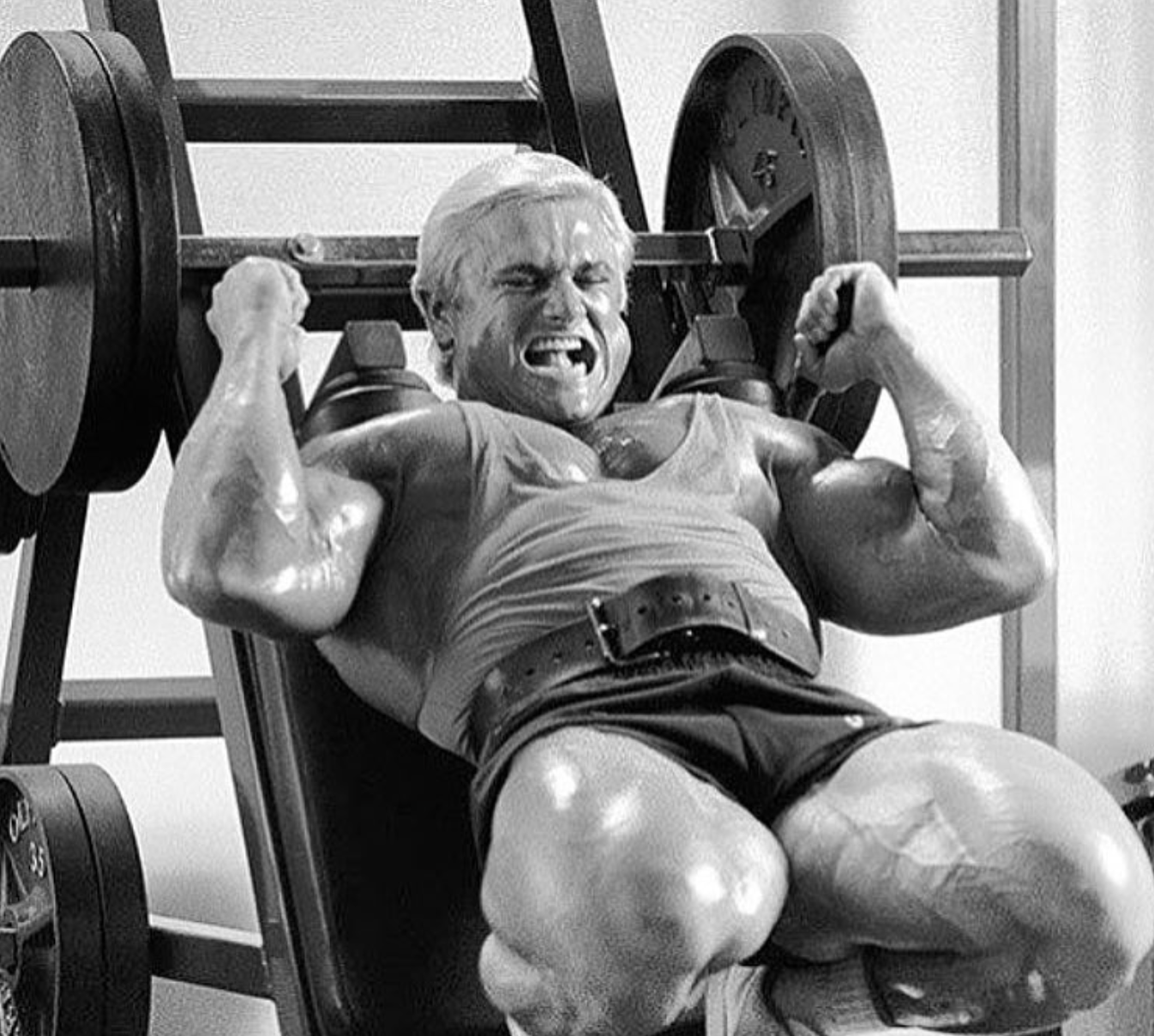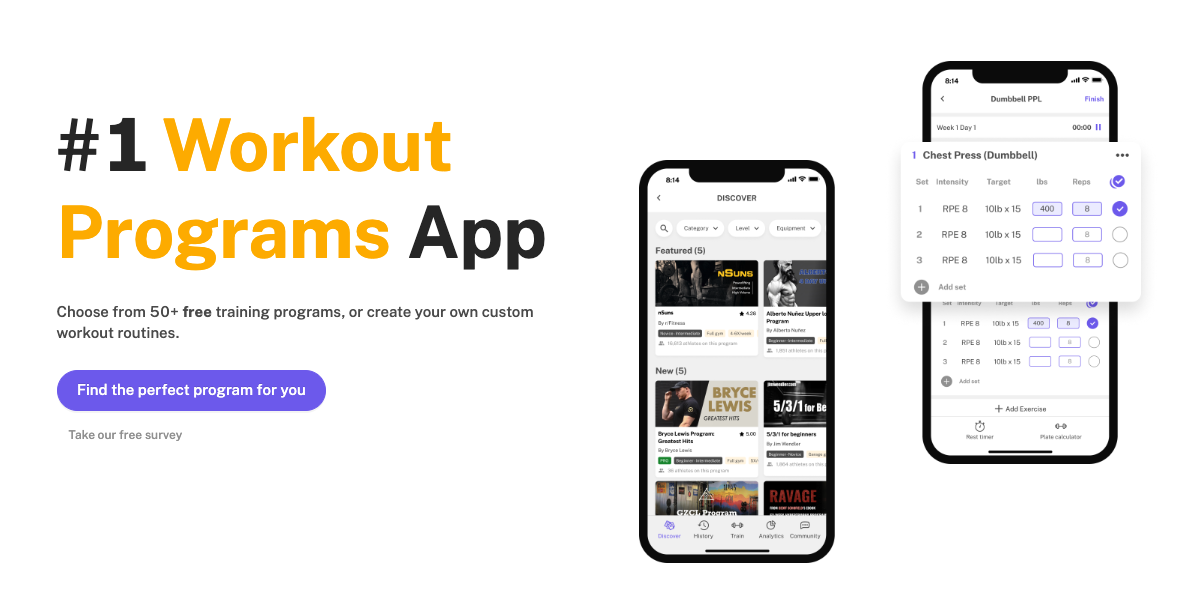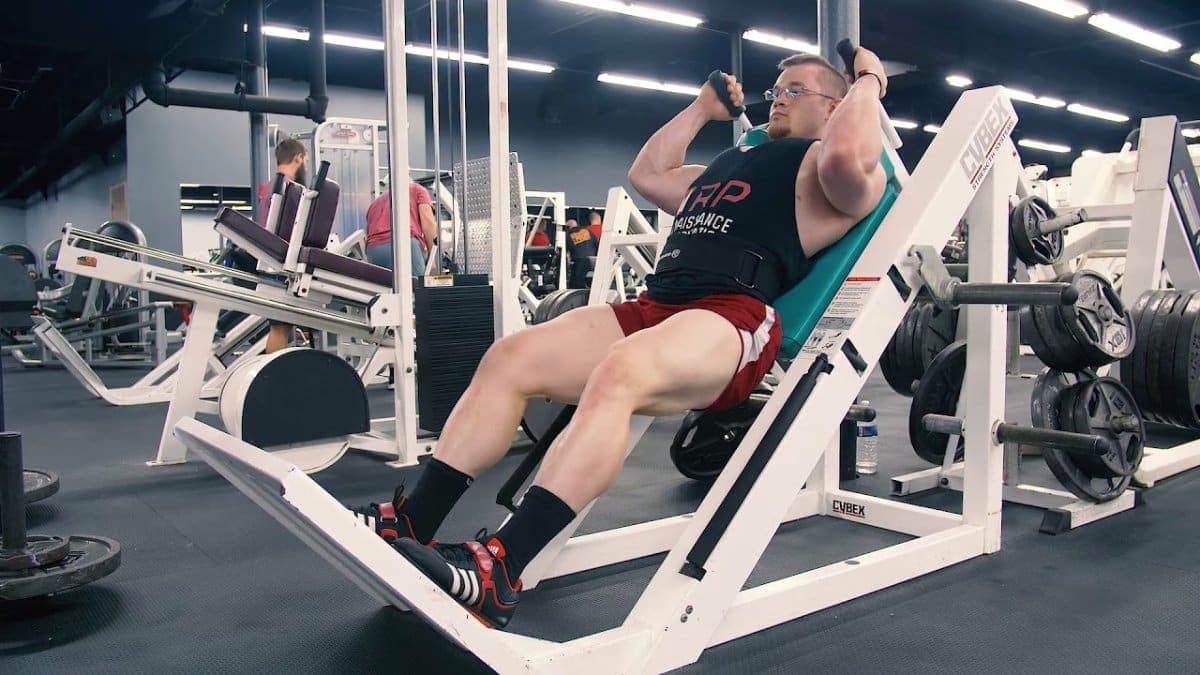Hack Squat Guide: The Ultimate Exercise Encyclopedia
Written by The Boostcamp Editors
Hack Squat Guide: The Complete Exercise Encyclopedia
Looking to add a new move to your workout routine? The hack squat is a great way to target your leg muscles, without taxing your core (abdominal muscles) and back. If you have never heard of the hack squat, we’ll show you what the hack squat is, the pros and cons, and finally how to do it properly. Add the hack squat to any lower body workout as a great complement to squats and deadlifts. Pair it with three to five additional leg exercises and you’ll be sporting a stronger, leaner pair of legs in no time.
Whether your goal is bodybuilding or powerlifting, this exercise can be a fantastic addition to your routine. That being said, make sure that you’ve properly warmed up before you we dive into this exercise that can improve your lower body workout.
What is the Hack Squat?

Image courtesy of Instagram (@tomplatz)
The hack squat is a compound exercise that primarily targets the muscles in your legs, primarily the quads and glutes, and it is a favorite of many bodybuilders for a variety of reasons. Lifters who have a hard time isolating their quads with other compound movements like barbell squats, due to having longer legs, poor leverages, or mobility restrictions, may particularly benefit from the hack squat. Machine hack squat is a type of squat that emphasizes the entire lower body without putting excess strain on your lower back and core. It is a particularly powerful exercise for bodybuilding purposes, as it helps build muscles in the quads and glutes, and improves lower body strength. Adding hack squats to your leg day can provide even more benefits for gaining strength in your legs, specifically your quads and target muscles.
Why do the Hack Squat? Pros and Cons
As with anything, the hack squat has its pros and cons. Let's break down the benefits and drawbacks of this exercise.
Pros of the Hack Squat
Easier to learn than a barbell squat. Since the hack squat is done inside a machine that provides support for your lower back and core, there is less coordination involved, hence making it easier to learn (and potentially safer) than the barbell back squat.
Less strain on lower back and core. Unlike a back squat that requires you to stabilize your core and lower back throughout the entire movement, the hack squat allows you to focus on your legs without having to worry about your upper body as much.
It can be done with heavier weights. Since hack squats are done inside a machine, you can generally put more weight on the hack squat than you could on a barbell back squat. This makes hack squats a great exercise for those looking to build muscle mass.
Cons of the Hack Squat
Can lead to muscle imbalances. Since hack squats primarily target your quads and glutes, it can lead to muscle imbalances if you don’t counterbalance it with other exercises that target your hamstrings and calves.
Don’t have hack squat machines. Most small commercial gyms won’t have hack squat machines, so you’ll have to find a replacement exercise.
Less transferable than a barbell squat. Since barbell squats require you to have the bar on your back, it requires greater coordination and core strength to execute correctly.
How to do the Hack Squat
Now for the fun part, how do you actually complete the exercise? Let's take a look at how to perform hack squats.
Start by loading the reverse hack squat machine with the desired weight, you should choose a weight that you can safely handle for 8-12 repetitions.
Once you have loaded the machine, position yourself underneath the pad so that your shoulders are squarely under the shoulder pads and your back is flat against it.
Your feet should be shoulder width apart, with your toes pointing forward.
Keeping a tight grip on the handles throughout the exercise can improve upper body stability and reinforce a strong posture.
Additionally, when starting the exercise, it's important to remember that your central nervous system will have a little bit more in the tank when you're completely fresh.
This means that you can increase the weight used and lower the reps to challenge yourself even more.
By following these steps and incorporating a little bit of variation into your hack squat routine, you can maximize your results and build stronger leg muscles.
Slowly lower yourself down into a squatting position, keeping your back flat against the pad and your core engaged. Once you have reached the bottom of the squat, pause for a moment before driving through your heels to return to the starting position.

Source: https://www.strengthlog.com/
What Muscles do Hack Squats Work?
The hack squat targets your entire lower body, specifically emphasizing the quads (the big muscles above your front knee caps) and glutes (your butt). It will also work your hamstrings (the bigs muscles below your butt), calves, and core, but to a less degree. However, the stress it puts on those body parts makes the hack squat great for hypertrophy and strength.
How is a Hack Squat Different From a Back Squat?
The hack squat is a type of squat that is done inside a machine. Hack squats target the muscles in your legs, specifically your quads and glutes. The hack squat is different from a back squat in a few key ways: You don’t have to stabilize your core and lower back. Since hack squats are done inside a machine, your lower back and core are supported throughout the exercise. This takes some of the stress off of your lower back and core, making hack squats a good option for those who are injured or live with back pain. In addition, the hack squat allows you to target specific muscle groups by altering your foot position. By moving your feet backwards, you can focus on your quads, while moving them forwards will engage your hamstrings, glutes, upper back, and free weights.
Another advantage of the hack squat is the ability to use heavier weights, thanks to the support provided by the leg press machine. This makes it an effective exercise for building strength in your leg muscle groups. The hack squat can isolate the position of your body, so it's much more stable. So you can load it really heavy without having to focus on staying upright. Hack squats have been shown to be particularly beneficial for hypertrophy (muscle growth) and working muscles. The hack squat is something of an in-between of the barbell squat and the leg press. The upright body position and the emphasis on your quads mimic that of the squat (or even the front squat), but the stability of the leg press machine is similar to that of the leg press.
Best Hack Squat Alternatives
If you don’t have access to a hack squat machine or you’re looking for other exercises to target your legs, here are a few hack squat alternatives:
Barbell back Squat
The barbell back squat is a compound exercise that targets the same muscles as the hack squat. However, unlike the hack squat, the barbell back squat requires you to stabilize your own bodyweight, which can be challenging for some people.
Dumbbell Squat
The dumbbell squat is a variation of the traditional back squat that can be done with dumbbells instead of a barbell. This exercise is a good option for those who don’t have access to a barbell or for those who want to focus on one leg at a time.
Barbell Hack Squat
Another exercise that is similar to the dumbbell squat is the barbell hack squat, which is a variation of the barbell deadlift. However, in the barbell hack squat, the barbell is placed behind your legs instead of in front of them, forcing you into a more upright position and targeting your quadriceps more. The barbell hack squat encourages a deep squat position and allows for an upright torso, which reduces lower back strain. Technically speaking, this is the original hack squat. Named after George Hackenschmidt, a European strongman from the early 1900s, this movement is done by placing a barbell just behind your heels, squatting down, grabbing the bar, and lifting it up, making it one of the essential barbell exercises.
Goblet Squat
The goblet squat is another variation of the traditional back squat that can be done with a dumbbell or kettlebell. This exercise is a good option for beginners since it doesn’t require much weight.
Bulgarian Split Squat
The Bulgarian split squat is an exercise that targets the muscles in your legs, specifically your quads and glutes. Unlike the hack squat, this exercise requires you to balance on one leg at a time, which can be challenging for some people.
Leg Press
The leg press is a machine-based exercise that targets the muscles in your legs, specifically your quads. This exercise is a good option for those who want to use a hack squat machine but don’t have access to one.
Smith Machine Squat
The Smith machine squat is a variation of the traditional back squat that can be done inside a Smith machine. This exercise is a good option for those who want to use a hack squat machine but don’t have access to one.
Bodyweight Squat
The bodyweight squat is a variation of the traditional back squat that can be done without any weight. This exercise is a good option for beginners or for those who want to focus on their form.
Boostcamp: The Last Lifting App You’ll Ever Need
To help you find some new programs that include the hack squat, and maximize your strength gains, consider using the Boostcamp App. The Boostcamp app offers free science-based workout routines, advanced custom program builder, and a workout tracker to help you stay on top of your progress.
By using the Boostcamp App for your training routine, you'll have all the tools you need to develop a strong mind-muscle connection and break through plateaus. Download the Boostcamp App today and take your workouts to the next level!
Wrap Up
Overall, the hack squat is a great exercise to really build up your legs. There are different variations you can do, and it attacks the muscle from different angles than the traditional barbell back squat. However, if your gym does not have a hack squat machine, there are still a good amount of alternatives available that you can do, such as a leg press machine or a traditional squat, to still get a great leg workout in.
Will you be giving the hack squat a try?
Let us know! And be sure to follow Boostcamp on Instagram and subscribe on YouTube!


